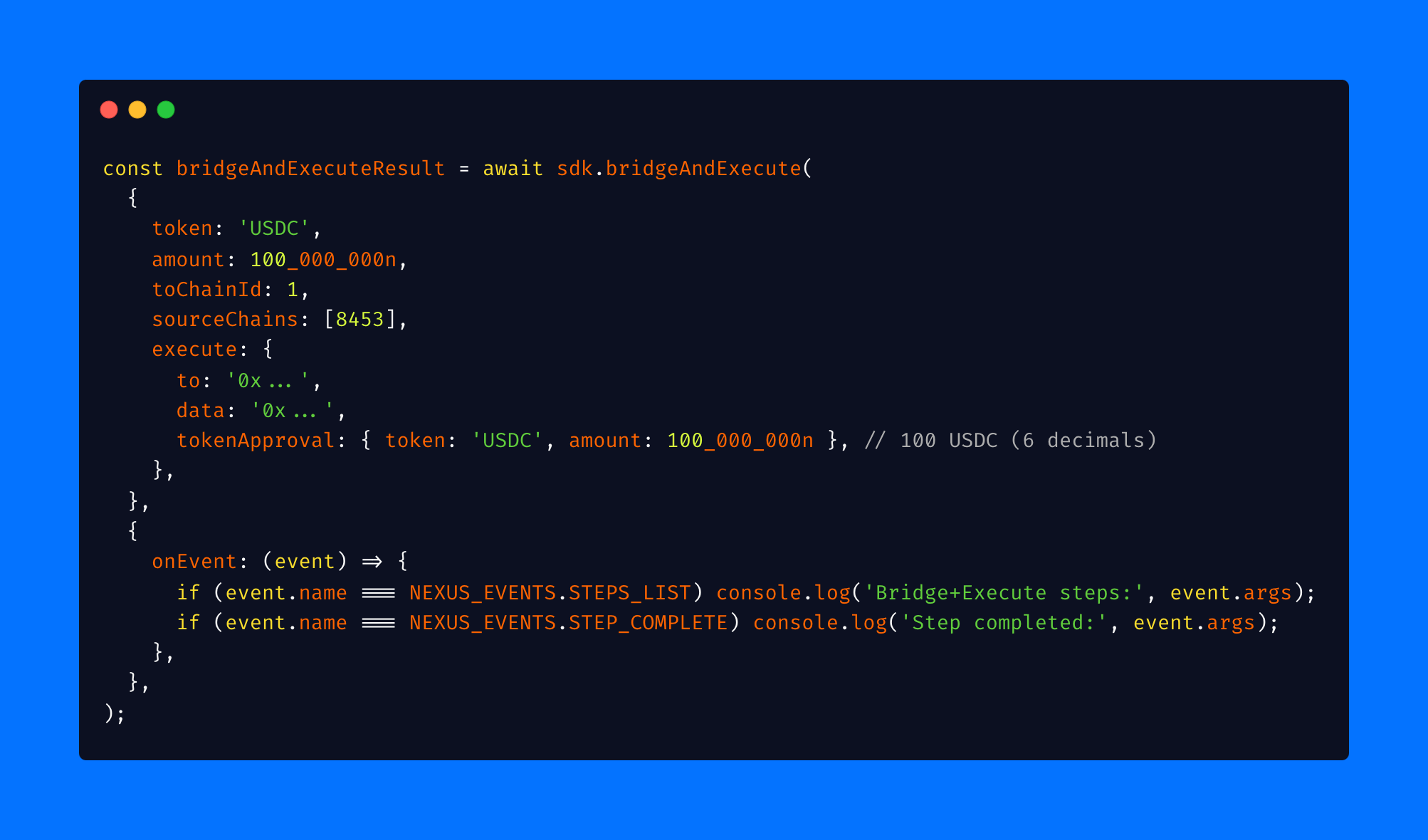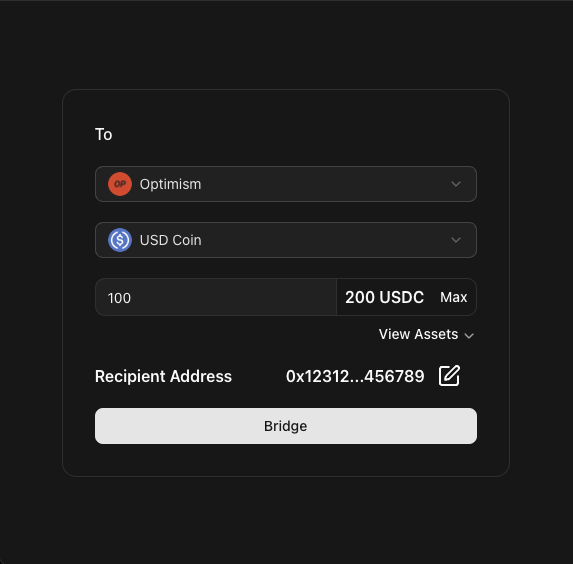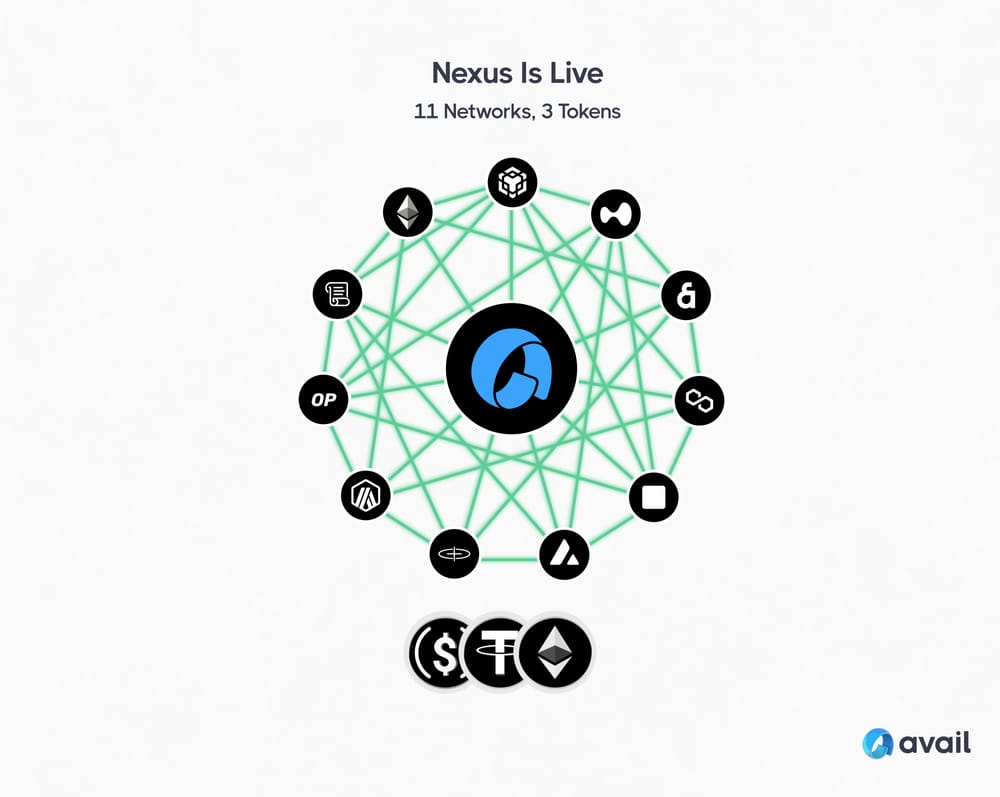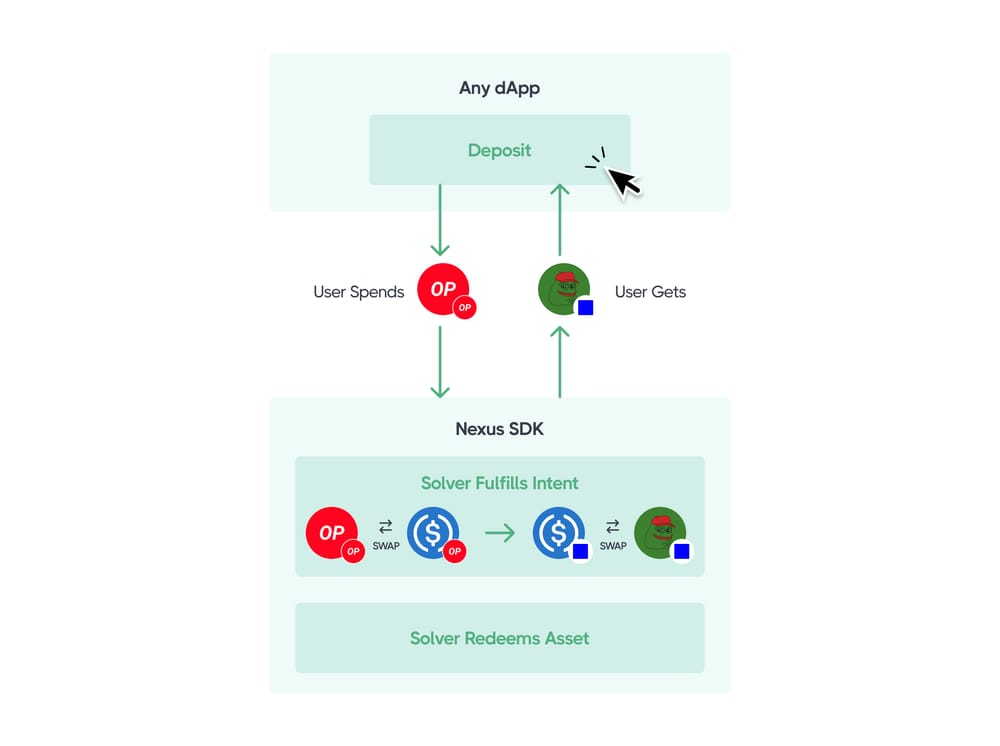Introduction to Nexus
Avail Nexus is the fastest, and easiest way for your application to go crosschain 🌊
Avail Nexus is a meta-interoperability protocol that unifies users, assets, apps, and chains, letting developers build once, scale everywhere, and access liquidity and users from across the Web3 economy.
- Unifies assets across chains
- Executes intents across ecosystems
- Let’s apps interact with contracts anywhere
- Handles gas, routing, and verification under the hood
- Treats liquidity as a single global resource
Deposit, Swap, Stake, Buy, Play - Avail Nexus abstracts chains away so that “intent” replaces complexity.
A seamless “bridgeless” experience.
Integrate Nexus - Create Liquid Apps
Nexus aims to reframe the mindset of both consumers and developers when using or building apps. With Nexus applications instantly gain access to users and liquidity from across Web3. They are longer just simple apps, they become Liquid Apps.
Get started building your Liquid App today by integrating Nexus.
Learn about Nexus Features
Dive deep into the core features your application can leverage when building with Avail.
- Bridge, Transfer, Bridge & Execute - Bridge Methods
- Exact In & Exact Out crosschain swaps - Swap Methods
Build liquid apps that can provide a truly bridgeless experience onchain.



